Almost 1400 species have been documented on the Belize Barrier Reef, the second longest coral reef in the world. During the UA in Belize: Rainforests and Reefs trip this May, we spent two weeks snorkeling the reef and seeking out as many of those species as we could. With so much biodiversity, it’s inevitable that some oddballs call those crystal blue Caribbean waters home. Here are ten of the weirdest, wackiest, and most whimsical animals I caught on camera.
10. Sponges
Though they have no organs, sponges are still animals! Sponge species display a spectrum of vibrant colors (the bright blues, reds, and yellows below) and shapes ranging from “rods” to “vases” to “barrels.”
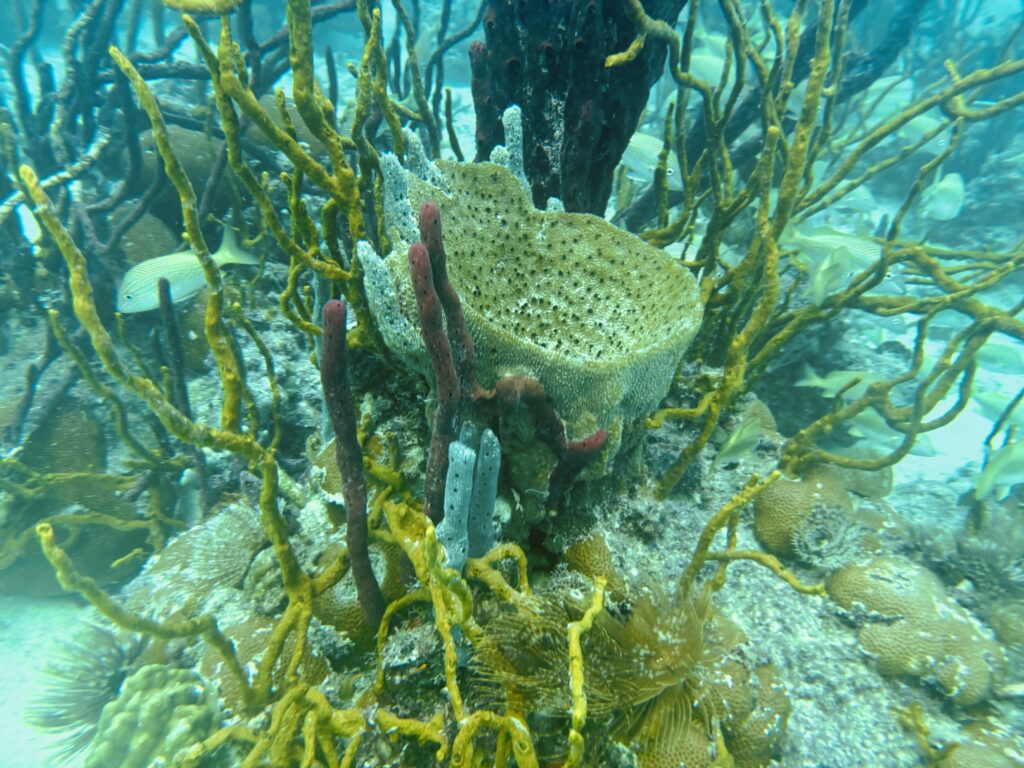
9. Spanish Slipper Lobster
Though I saw Caribbean spiny lobsters on almost every reef, the Spanish slipper lobster (Scyllarides aequinoctialis) was much more elusive. This individual camouflaged well against the algae-covered coral.
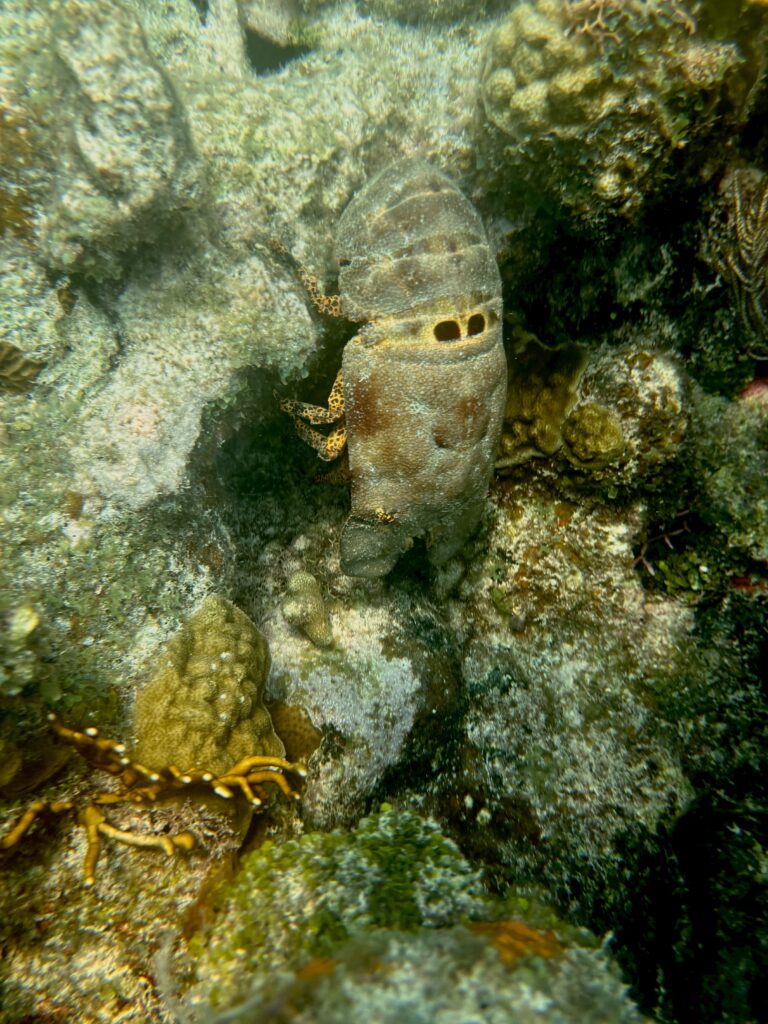
8. Atlantic Trumpetfish
Of course, fish get their share of weird creature action, too. The slender, snouted Atlantic trumpetfish (Aulostomus strigosus) highlights an extreme of fish morphology.
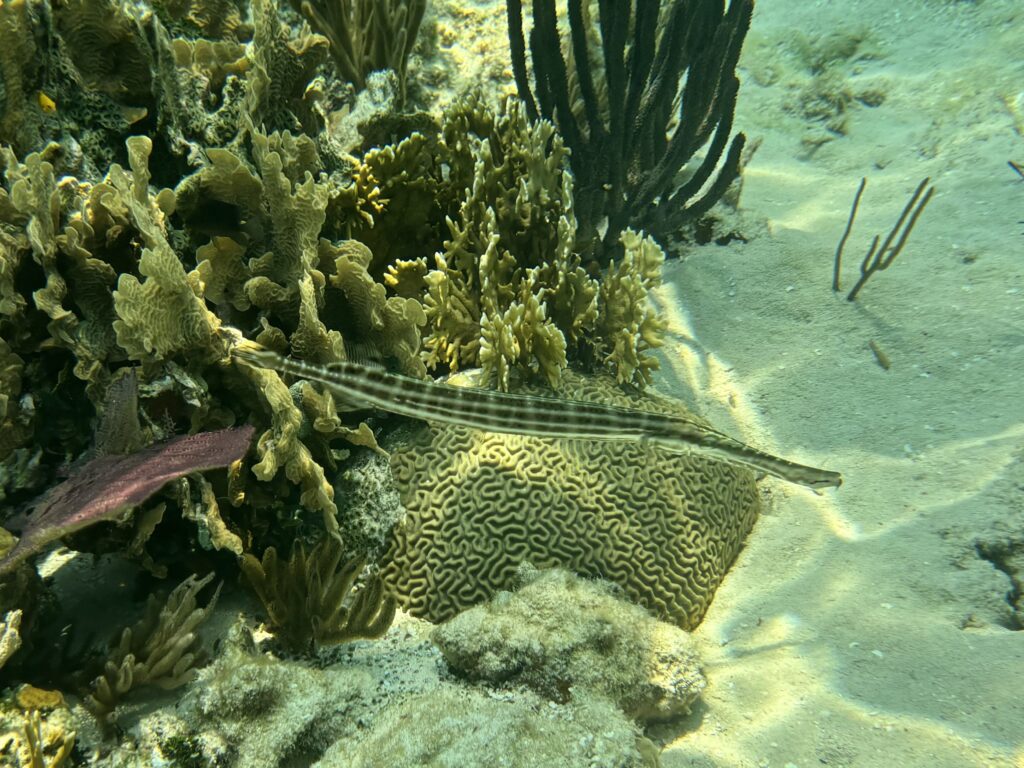
7. Arrow Crab
The arrow crab (Stenorhynchus seticornis) is almost nothing but limbs. It reminds me of a nightmarish 10-legged bacteriophage.
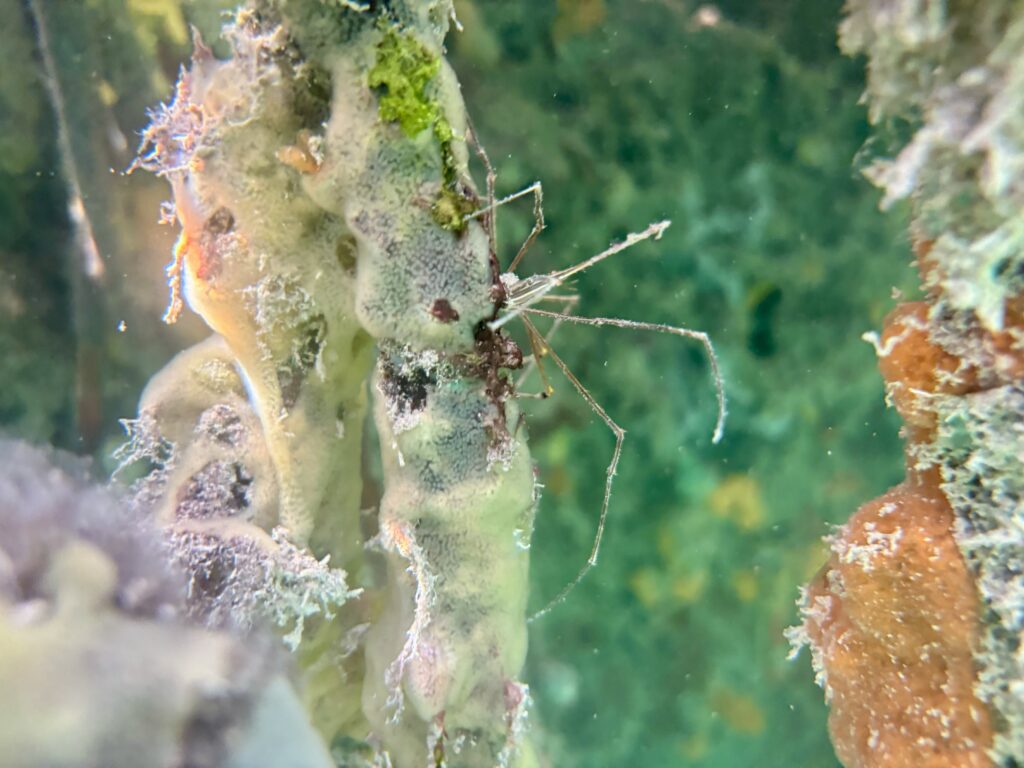
6. Flamingo Tongue Snail
Flamingo tongue (Cyphoma gibbosum) is a picky eater with a heavy preference for feasting on sea fan corals. This snail inhabits a shell (like most gastropods), but the bright circles visible on its back are not on its shell, but instead on a soft mantle covering its shell.
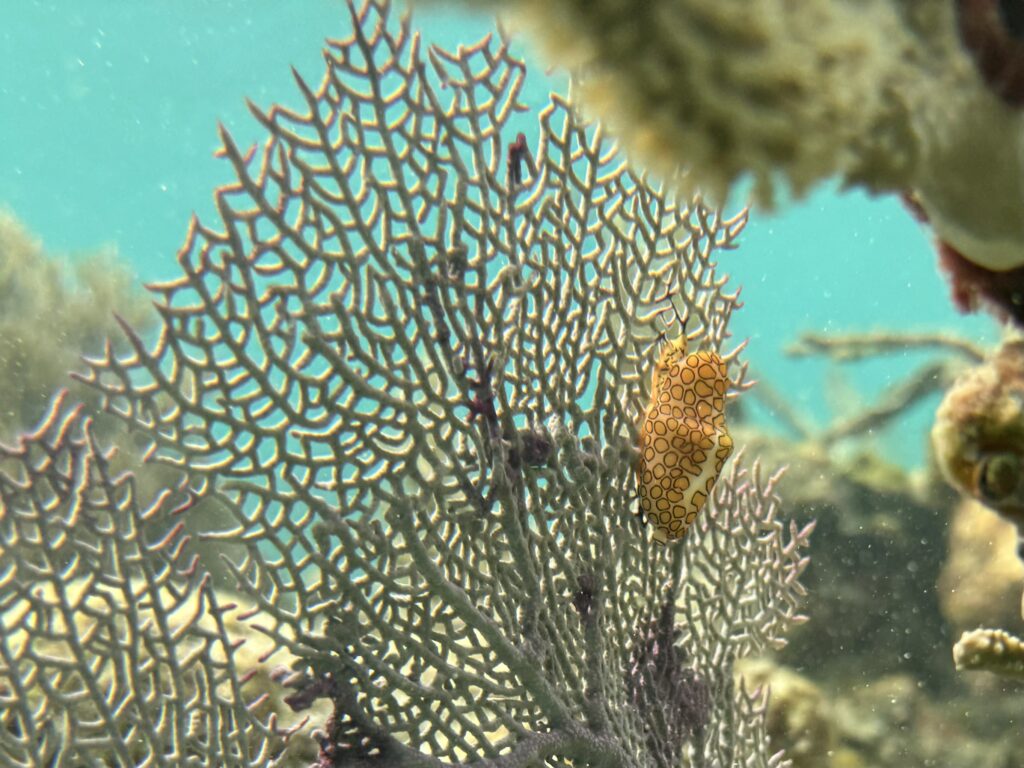
5. Donkey Dung Sea Cucumber
The donkey dung sea cucumber (Holothuria mexicana) lives up to its name and can grow almost two feet long.
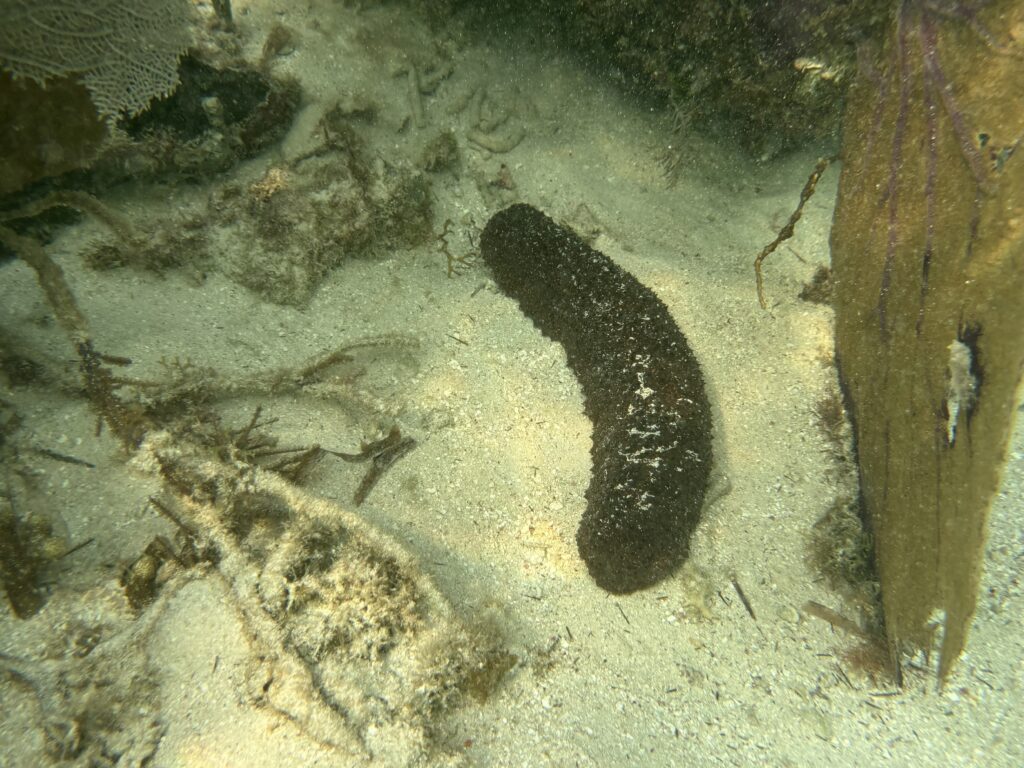
4. Magnificent Feather Duster
One of my favorite ways to kill time in the water was playing the “feather duster game”, which has only one rule: poke the feather duster. When disturbed or threatened, a magnificent feather duster (Sabellastarte magnifica) will shoot back into the tube from which its plumage protrudes.
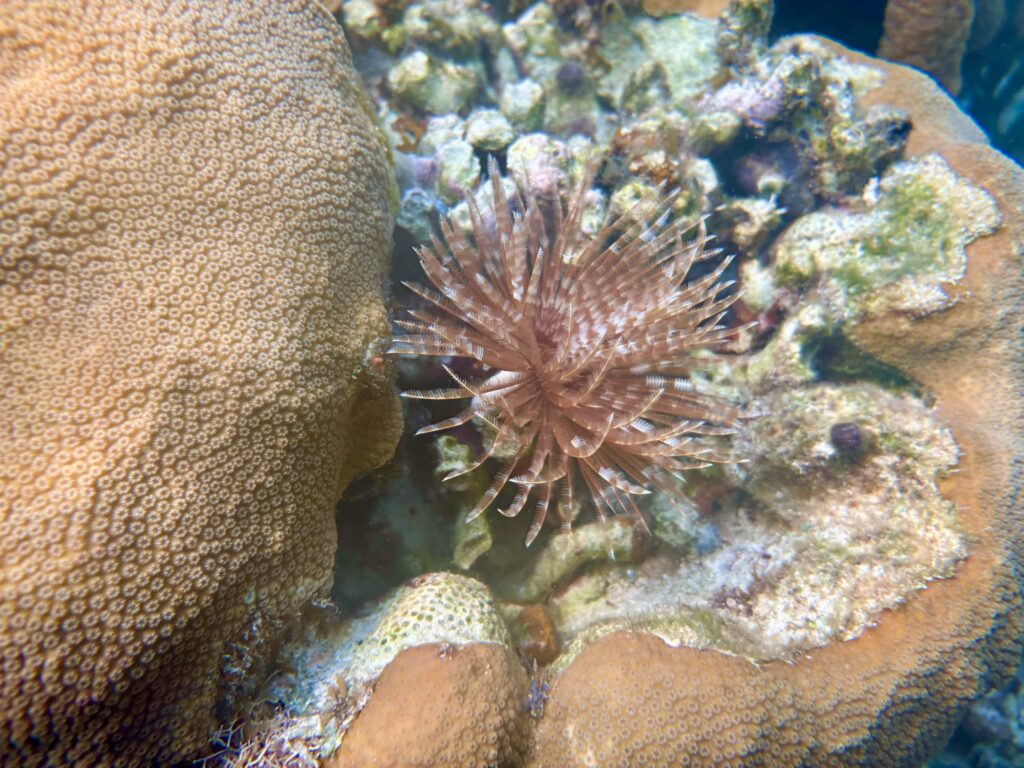
3. Upside Down Jellyfish
In the murky, tannic water of coastal mangrove forests lurks Cassiopea xamachana, the upside down jellyfish. These jellyfish rest on their bells on the substrate, which thankfully keeps their tree-like tentacles out of the way of snorkelers.
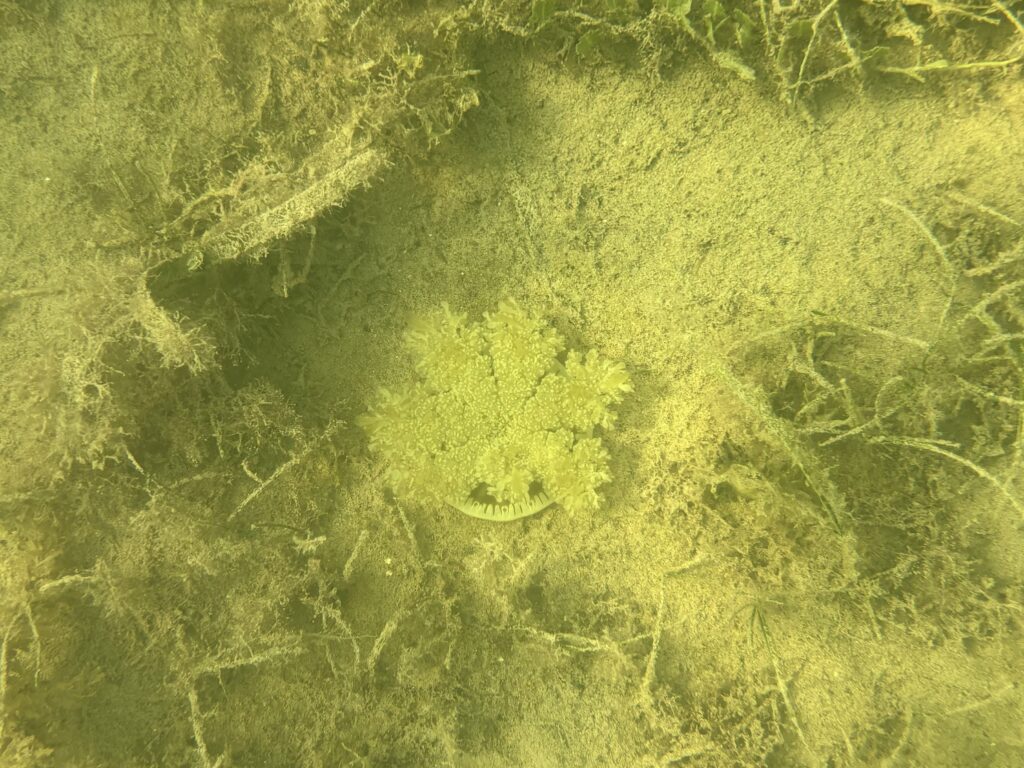
2. West Indian Fuzzy Chiton
The West Indian Fuzzy Chiton (Acanthopleura granulata) possesses a tough, plated shell that hosts hundreds of tiny eyes (!). These molluscs are abundant along the sea wall at South Water Caye.
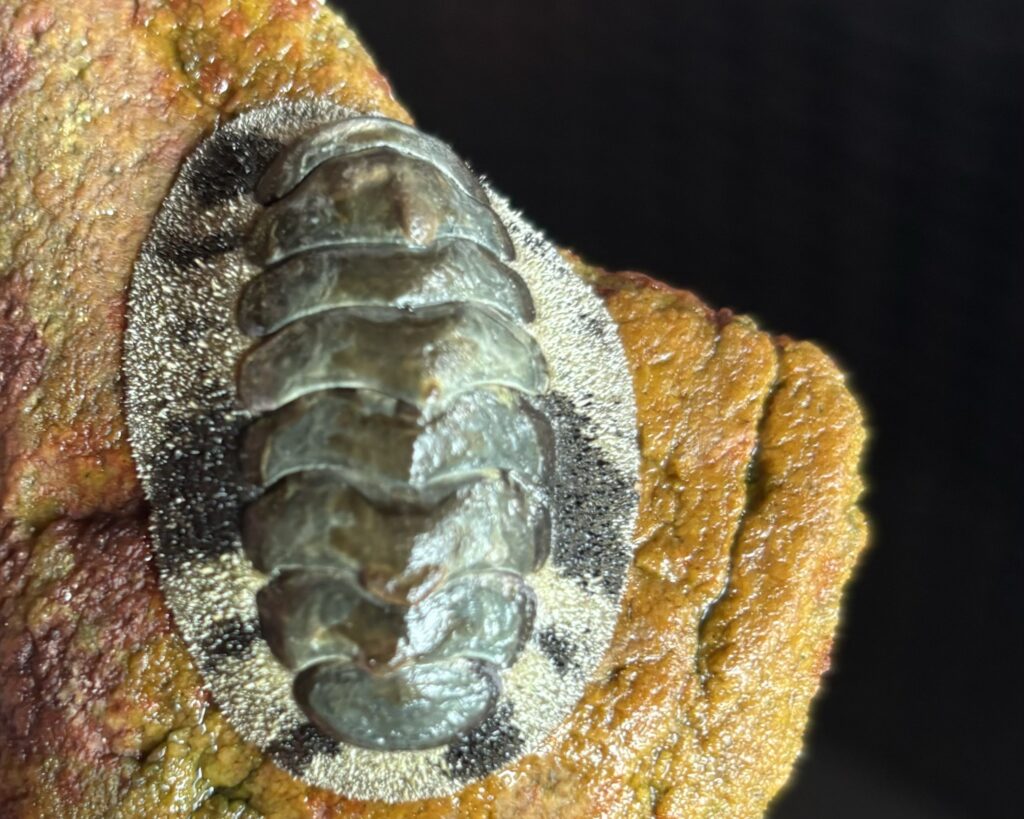
1. Christmas Tree Worm
Coming in at number one is another animal that is barely recognizable as such. Like feather dusters, the Christmas tree worm (Spirobranchus giganteus) forms a calcareous tube and filter feeds with its frilly appendages.

